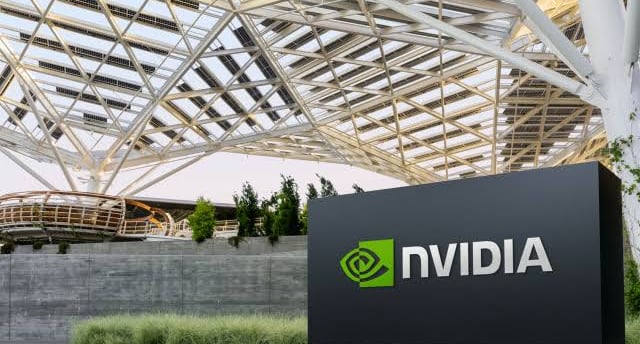Add your promotional text...
Unleashing Nvidia’s Potential in 2024: Navigating the AI Revolution
Synopsis: Explore how Nvidia (NASDAQ: NVDA) is cementing its leadership in the AI chip market and driving its stock price to new heights. This blog delves into Nvidia’s strategic moves, including a pivotal 10-for-1 stock split, record-breaking financial performance, and innovative AI chip platforms like Blackwell and Rubin. Additionally, it examines the challenges posed by competitors and evolving market dynamics. Discover how Nvidia’s relentless focus on innovation and expansion positions it for sustained growth in the rapidly evolving AI landscape.
VIEWS ON NEWS
By Alankrita Shukla
6/10/20244 min read


Nvidia’s Stock Price, Upcoming Split, and the AI Transformation
Nvidia (NASDAQ: NVDA) has become a pivotal player in the artificial intelligence (AI) landscape, driving its stock price to new heights over recent months. This surge is fueled by its leading role in the AI chip market, the upcoming stock split, and the rapidly evolving AI adoption landscape. Initially renowned for its graphics processing units (GPUs) in gaming and data centers, Nvidia has now leveraged its expertise to dominate in blockchain development and AI, designing specialized chips optimized for cryptocurrency mining, machine learning, and AI applications.
Nvidia’s Commanding Presence in the AI Sector
Nvidia’s supremacy in the AI chip market is evident, holding an estimated 95% market share in machine learning and data center GPUs. These AI-specific chips are indispensable for training and deploying AI models, supporting applications ranging from image recognition and natural language processing to autonomous driving and robotics.
The widespread incorporation of AI across industries is a major growth driver for Nvidia. AI’s penetration in sectors like healthcare, finance, manufacturing, and retail creates vast multi-billion dollar markets. As businesses strive to utilize AI for automation, optimization, and data analysis, the demand for Nvidia’s AI chips continues to skyrocket.
Robust Performance Fueled by AI
Nvidia’s financial performance, as revealed in its May 2024 earnings report, underscores the escalating demand for AI chips. The company posted a record quarterly revenue of $26 billion, marking an 18% increase from the previous quarter and a staggering 262% rise year-over-year.
This growth was predominantly driven by the Data Center segment, which saw an astounding 427% year-over-year revenue increase. These results highlight the ongoing momentum in AI adoption and Nvidia’s adeptness at capitalizing on this trend.
Nvidia’s Stock Split: A Growth Catalyst?
Nvidia’s announcement of a 10-for-1 stock split aims to make its shares more accessible by increasing the number of shares outstanding while reducing the price per share. This move could attract a broader range of investors, including those previously deterred by the high stock price.
The stock split Is anticipated to bring several benefits. It could boost trading volume by making the stock more appealing at a lower price point. Additionally, the lower share price might enhance Nvidia’s chances of being included in price-weighted indices like the Dow Jones Industrial Average, thereby increasing its visibility and appeal among investors.
The recent surge In Nvidia’s stock price ahead of the split reflects the expected increase in demand and interest. Investors foresee the split making the stock more attractive, potentially increasing trading activity and driving price appreciation.
Challenges and Competitive Pressures
Despite its dominant position, Nvidia faces challenges from emerging competitors and evolving market dynamics. Companies like AMD (NASDAQ: AMD) and Intel (NASDAQ: INTC) are heavily investing in developing their own AI chips, aiming to capture a portion of the burgeoning AI market. Nvidia’s reliance on third-party manufacturers for production introduces potential risks, as supply chain disruptions could impede its ability to meet growing demand.
Additionally, Nvidia’s major clients, such as Amazon (NASDAQ: AMZN), Google (NASDAQ: GOOG), and Microsoft (NASDAQ: MSFT), are increasing”y developing their own AI solutions, potentially reducing their dependency on Nvidia’s chips. This market shift could pose long-term challenges for Nvidia, necessitating constant innovation and expansion to maintain its competitive edge.
Strategic Vision for Future Growth
To navigate the competitive landscape and sustain growth, Nvidia has outlined several strategic initiatives. These include developing new AI chip platforms, expanding into new markets, and enhancing software offerings to support its AI ecosystem.
Nvidia plans to release new AI chip platforms, such as Blackwell and Rubin, designed to support a new era of AI computing on a larger scale. The Blackwell platform is expected to handle trillion-parameter generative AI models, while the Rubin platform aims to further boost performance and capabilities.
Additionally, Nvidia is venturing into new markets with the Spectrum-X platform, targeting Ethernet-only data centers. This expansion broadens the company’s customer base and capitalizes on the growing adoption of Ethernet-based infrastructure in data centers.
To further cement its position in the AI ecosystem, Nvidia has introduced NVIDIA NIM, a software offering that delivers enterprise-grade generative AI across various environments, including cloud, on-premises data centers, and RTX AI PCs. This initiative aims to streamline the deployment and use of generative AI models for businesses, driving growth across multiple industries.
The Broader Implications of Nvidia’s Stock Split
While the stock split is a significant event, it is just one aspect of Nvidia’s broader growth narrative. The primary driver of its growth remains its dominant position in the AI chip market and its strategic focus on innovation and expansion. However, the company must continually navigate competition from emerging players, supply chain challenges, and evolving client dynamics.
Outlook for Investors
Investors looking to understand Nvidia’s future prospects should consider these factors. The company’s dominant market share, aggressive strategic plans, and the accelerating adoption of AI technology suggest a promising future for Nvidia. However, emerging competition, supply chain challenges, and evolving market dynamics must also be factored into any investment decision.
Nvidia’s proactive approach to innovation, expansion into new markets, and strategic initiatives to enhance its AI ecosystem position it well for future growth. Yet, maintaining its competitive edge will require ongoing vigilance and adaptation to the rapidly changing technological landscape. Investors should keep a close eye on these dynamics to gauge Nvidia’s long-term trajectory in the AI revolution.
